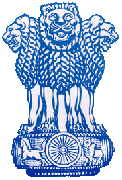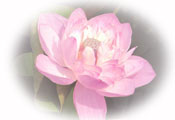|
|

|
|

National SymbolsState Emblem | National Calendar | National Song | National Anthem | National Bird | National Animal | National Flower |
|
National Flag |
||
 |
||
|
The national Flag is a horizontal tricolour of deep saffron at the top, White in the middle and dark green at the bottom in equal proportion. The ratio of width of the flag to its length is two to three. In the center of the white band is a navy blue wheel which represents the 'Chakra'. Its design is that of the wheel which appears on the abacus of Saranath Lion Capital of King Ashoka. Its diameter approximates to the width of the white band and it has 24 spokes. The design of the National flag was adopted by the constituent Assembly of India on 22 July in 1947. Its use and display are regulated by the Indian Flag code. |
|
|
State Emblem |
||
|
The state emblem is an adaptation from the Saranath Lion Capital Of Ashoka. In the Original, there are four lions, standing back to back, mounted on an abacus with a frieze carrying sculptures in high relief of an elephant, a galloping horse, a bull and a lion separated by intervening wheels over a bell shaped lotus. Carved out a single block of polished sandstone, the capital is crowned by the wheel of the law (Dharma Chakra). In the state emblem, adopted by the government of India on 26 January 1950, only three lions are visible, the fourth being hidden from view. The wheel appears in relief in the center of the abacus with the bull on right and a horse on left and the out lines of other wheels on extreme right and left. The bell shaped lotus has been omitted. The words 'Satyameva Jayate' from Mundaka Upanishad, meaning "Truth Alone Triumphs", are inscribed below the abacus in Devanagari Script. |
||
 |
|
The National calendar based on the Saka Era with Chaitra as its first month and a normal year of 365 days was adopted from 22 march 1957 along with the Gregorian calendar for the following official purposes Gazette of India News broadcast all India radio Calendars issued by the government of India and Government communications addressed to the members of the public. Dates of the national calendar have a permanent correspondence with dates of the Gregorian calendar ; Chaitra falling on 22 march and on 21 march in leap year. |
|
National Anthem |
|
"Jana -gana -mana -adhinayaka -jaya he Playing time of the full version of the national anthem is approximately 52 seconds. A short version consisting of first and last lines of the stanza (playing time approximately 20 seconds) is also played on certain occasions. The following is Tagore's English rendering of the anthem. Thou art the ruler of the minds of all people, dispenser of India's destiny. Thy name rouses the hearts of Punjab, Sind, Gujarat and Maratha, Of the Dravida and Orissa and Bengal; It echoes in the hills of the Vindyas and Himalayas, mingles in the music of Jamuna and Ganges and is chanted by the waves of the Indian sea. They pray for thy blessings and sing thy praise. The saving of all people waits in thy hand, thou dispenser of India's destiny. Victory, victory, victory to thee. |
|
National Song |
|
The song 'Vande Matharam' , composed in Sanskrit by Bankimchandra Chaterji, was a source of inspiration to the people in their struggle for freedom. It has an equal status with 'Jana-gana-mana'. The first political occasion when it was sung was the 1896 session of the Indian National Congress. The following is the text of its first stanza;
|
|
National Animal - Tiger |
|
The
magnificent Tiger ,Panthera Tigris (Linnaeus), is a striped animal.
It has a thi |
|
National Bird - Peacock |
|
The
Indian P |
|
National Flower - Lotus |
|
|
Lotus (Nelumbo nucifera) is the National Flower of India. It is a sacred flower and occupies a unique position in the art and mythology of ancient India and has been an auspicious symbol of Indian culture since time immemorial. |
 |